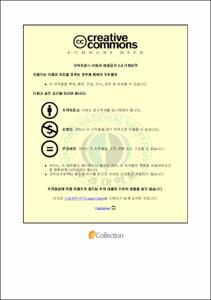실질환율이 무역수지에 미치는 영향 : J-곡선 효과
- Alternative Title
- The Influence of Real Exchange Rate on Trade Balance: The J-Curve effect
- Abstract
- This study investigates the short-run and long-run relationships between trade balance and real exchange rate using bilateral data for Korea vis--vis three of her major trading partners on a monthly basis over the period of 1991:12 to 2012:01 for US and Japan and over the period of 1994:04 to 2012:05 for China.
Based on the partial reduced form model of Rose and Yellen (1989) derived from the two-country imperfect substitute model, this study uses the bounds testing approach to cointegration. For the additional tests, this paper examines the impulse response function and variance decomposition using VAR model.
Based on the ARDL bounds test, we find evidence of cointegration for US and Japan, verifying the presence of a long-run equilibrium relationship between the Korea’s bilateral trade balance and domestic income, foreign income and real exchange rate. For China, the bounds test gives an inconclusive results for the cointegration. However, a negative and significant coefficient of error correction term implies that there exists a cointegration relation among the variables in the long run. We also document that, for all three countries, the values of long-run elasticity for real exchange rate are larger than those of the other variables, indicating that a depreciation of the real exchange rate will lead to a long-run improvement in Korea’s bilateral trade balance with these countries. This result also implies that an adjustment of exchange rate by the government enables the trade balance with these countries to improve in the long run.
Our findings also show that a rise in the long-run income level of Korea has a significant and negative (positive) impact on its bilateral trade balance with Japan and China (US). On the country, an increase in the income of all the trading partners leads to an improvement in Korea’s trade balance in the long. These results seem to be in favor of the general view that emphasizes the demand effect of both domestic and foreign income on the domestic (Korea) trade balance.
Based on the results of short-run ECM, the evidence of a J-curve phenomenon is not found in the Korea’s bilateral trades with all three countries. Although we can find little evidence of a J-curve, a real depreciation of the won leads to an initial improvement in the Korea’s trade balance. This finding is also supported by the results of impulse response function and variance decomposition. Specially, the real exchange rate has a most important role in the change in Korea’s trade balance with US and Japan. In contrast, the effect of real exchange rate on the Korea’s trade balance with China is much smaller compared with the other two countries.
In sum, due to high price elasticity of Korea’s exports and thus high responsiveness to exchange rate change, the export volume effect on the bilateral trade balance appears to dominate the price effect from the initial stage of the depreciation. Thus, there could be a positive effect on the trade balance in the short run.
- Issued Date
- 2013
- Awarded Date
- 2013. 2
- Type
- Dissertation
- Publisher
- 부경대학교
- Alternative Author(s)
- Kim, Mi Jung
- Affiliation
- 부경대학교 대학원
- Department
- 대학원 경제학과
- Advisor
- 심성훈
- Table Of Contents
- 제1장 서론 1
제2장 이론적 배경 및 선행연구 4
제1절 이론적 배경 4
제2절 선행연구 8
제3장 우리나라의 무역현황 11
제1절 수출입 비중 11
제2절 환율과 무역수지 15
제4장 분석방법 및 분석자료 22
제1절 분석방법 22
제2절 분석자료 33
제5장 실증분석 34
제1절 ARDL 분석 34
제2절 VAR 분석 47
제6장 결론 53
참고문헌 55
- Degree
- Master
- Files in This Item:
-
-
Download
 실질환율이 무역수지에 미치는 영향 : J-곡선 효과.pdf
기타 데이터 / 885.41 kB / Adobe PDF
실질환율이 무역수지에 미치는 영향 : J-곡선 효과.pdf
기타 데이터 / 885.41 kB / Adobe PDF
-
Items in Repository are protected by copyright, with all rights reserved, unless otherwise indicated.